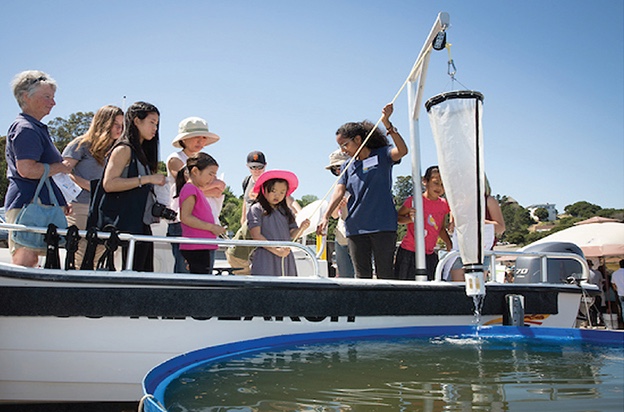
Tiburon-Based Marine Science Lab Falls Victim to SFSU Budget Cuts
Romberg Tiburon Campus, a research arm of San Francisco State University (SFSU), is facing closure due to SFSU budget cuts. Also housing the Estuary & Ocean Science Center (EOS Center), the Romberg Tiburon Campus has supported maritime commerce, naval defense and training, and marine science and education for over a century, and is especially well-suited to support the interdisciplinary mission of the EOS Center. It’s also the only marine science lab on San Francisco Bay.

The San Francisco Chronicle reports that SFSU administrators advise they “can’t afford to keep the site running amid broader financial problems within the university system,” and want the Tiburon Campus to come up with a plan to support itself.
According to EOS Center’s Interim Executive Director Dr. Katharyn Boyer, “12 active research labs will close down, grant funding will have to be returned, including the $5.8M from NOAA for a new Aquatic Research and Training facility and substantial amounts of funds from the State Coastal Conservancy for projects specific to our campus on the Bay.
“Although the EOS Center has made tremendous strides over the last two years in fundraising through grants and leases for our 53-acre campus to be self-supporting, we have an annual shortfall of $550K for covering the operating costs. This may not seem like a large amount, but San Francisco State University is experiencing a severe budget crisis and is looking for places to cut.
“We have restoration and research projects that require the EOS Center for its bay water supply to tanks and water tables, its shoreline test bed for climate change adaptation techniques, and its access to deep water for long-term water quality monitoring, among other projects. The future of our onsite partnerships with the Smithsonian and National Estuarine Research Reserve is now unclear.”
Boyer and her colleagues are putting together funding proposals that they hope to submit to the university this month, including income-generating ideas such as “building housing at the site,” the Chronicle reports.
“We are devastated by the news but also resolved to identify and propose alternatives,” Dr. Boyer continued in a newsletter. “We are working with potential donors who may be able to provide funding as a stop-gap, and are activating plans for partnerships that could provide a long-term funding solution.”
Boyer is also appealing to the community to come forward with any ideas or connections that may help save the center, adding, “I hope you will consider writing a letter to the CSU’s Chancellor to urge that the EOS Center remain open; link to a template is below.”
Find more information about the Center’s proposed closure here: https://eoscenter.sfsu.edu/closure
If you would like to send a letter, you can use this template.

The potential closing of the Estuary and Ocean Center (Romberg Tiburon Center) has significant implications to all those who use and enjoy the Bay. For almost 50 years, the Center faculty and students have conducted research on the Bay that has guided state policies in regard to freshwater inflows to protect fisheries, improving water quality through better waste water treatment, employing natural systems to protect shorelines from sea level rise, controlling toxic algal blooms and invasive species, and restoring intertidal and submerged habitats. As a faculty member at RTC for 20 years and former Director, it is hard to understand the fiscal sense of closing the facility. It brings in millions of dollars each year to support its research program and improve the infrastructure including over $10 million last year for community related programs to develop innovative approaches to sea level rise adaptation and to fund a new bayside research facility to grow and study marine seagrasses. It has trained hundreds of students, many of who go on to marine science careers in both government and private industry. The Center holds annual open houses that bring in the public to learn more about the organisms that inhabit the Bay and to inspire children to explore the ocean. It is true that the CSU system as a whole is under severe fiscal stress, but closing this Center to save about $600,000 will mean returning grants and contracts, losing extraordinary scientific talent, and eliminating hands-on training of a new generation of students dedicated to making the Bay better for all of us. I urge my fellow sailors, fisherman, and kayakers to look around you at the beautiful place we call San Francisco Bay and email the Chancellor of CSU and the President of SFSU to reconsider this action and keep EOS operating for all our benefit.